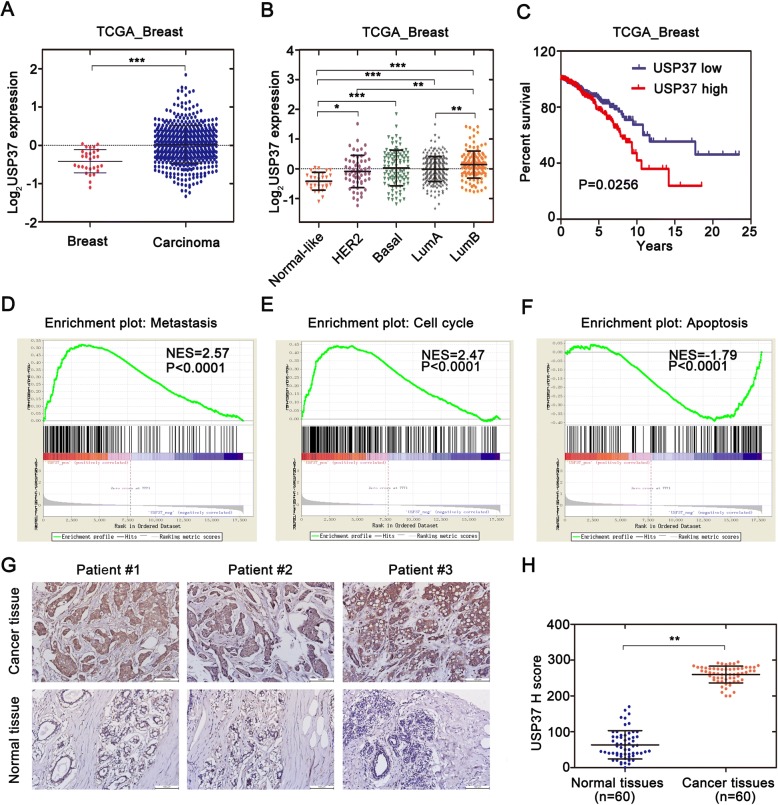Fig. 1.
Overexpression of USP37 in human BC was correlated with poor-disease outcome. a Cancer with USP37 transcripts apparently had higher expression (n = 517) than normal breast tissues (n = 29) from the TCGA database [22] (***P < 0.0001). The median and interquartile range are represented by black lines. b USP37 transcripts among different subtypes are divided into five distinct molecular subtypes. The parameters were analyzed with the PAM50 gene expression profiling [22]. The median with interquartile range is represented by black lines. c Breast cancer (n = 738 patients) were evaluated with USP37 mRNA levels and results were correlated with overall survival over 25 years. The red line indicates patients with high USP37 transcript (n = 369) and blue line indicates patients with low USP37 transcript (n = 369). P value was analyzed by Kaplan-Meier analysis using GraphPad Prism. d-f GSEA analysis showed that USP37 expression was positively associated with metastasis (d) and cell growth (e) while negatively related to cell apoptosis (f) in the TCGA breast cancer samples. g The USP37 protein level in breast cancer tissues and surrounding tissues are shown by immunohistochemistry (IHC) (Brown: USP37). Scale bars: 100 μm. h USP37 IHC staining scores in breast cancer tissues (n = 60) and surrounding tissues (n = 60) are shown. **P < 0.01

